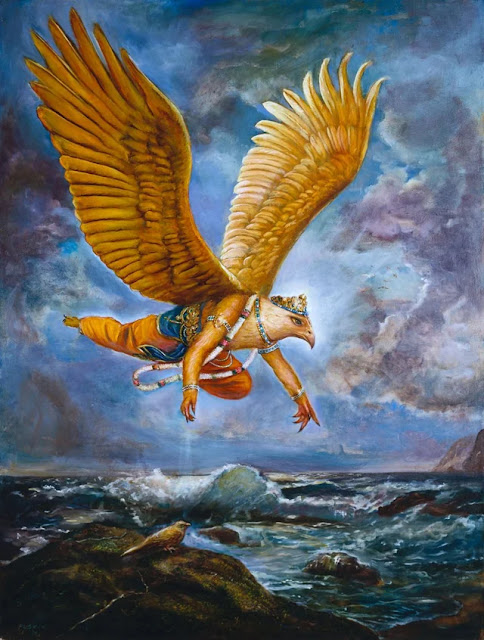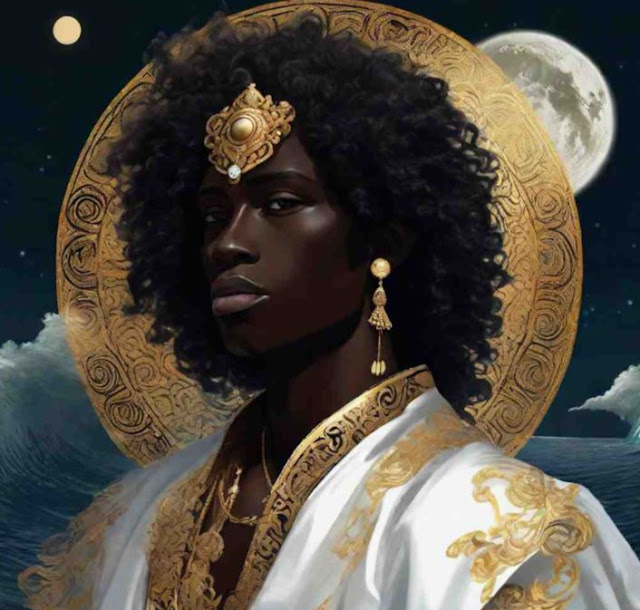Bicolano mythology, while less prominent in mainstream Philippine culture, holds a wealth of legends and deities that embody the region’s deep spiritual heritage. Unlike more dominant mythologies, Bicolano myths are not as aggressive or domineering, emphasizing harmony with nature and balance in life. Let’s explore not only the lesser-known Bicolano gods but also deities from other Philippine mythologies to shed light on the diversity of the archipelago’s spiritual beliefs.
MAPULON
.jpeg) |
| Mapulon |
1. Mapulon: The Kind Tagalog God of Seasons and Health
Mapulon, a Tagalog deity, is associated with the seasons and is known for his gentle and nurturing nature. As the god of seasons, he ensures the smooth transition between the dry and rainy seasons, creating harmony in the natural world. Soft winds often accompany his presence, bringing good weather and marking the peaceful shift from one season to another.
He is also known as the deity of good health and medicine, nourishing the land with healing herbs. These plants, under Mapulon’s care, are believed to provide cures for the people. His kindness is evident in his desire to maintain balance and promote the well-being of humanity. Mapulon is often regarded as one of the kindest deities, second only to Lakapati, the goddess of fertility and cultivated lands. Together, Mapulon and Lakapati form a loving pair, united by their shared compassion for humanity. Depictions of Mapulon show him as a handsome man, often wearing a mask and a necklace of herbs—symbols of his healing power.
APUNG SINUKUAN
2. Apúng Sinukuan: The Powerful Deity of Mount Arayat
Apúng Sinukuan, also known as Aring Sinukuan, is a Kapampangan deity deeply tied to Mount Arayat. He is revered as the sun god of war and death, with command over fire and lightning (locally known as "alti"). His skin is said to be golden and tanned, adorned in gold, symbolizing his connection to the sun and the strength he draws from it. Apúng Sinukuan taught ancient people various skills, including metallurgy, wood cutting, rice cultivation, and the art of war. he sometimes appears in the form of a radiant and beautiful white phoenix descending from the heavens
 |
| Aring Sinukuan phoenix form |
Apúng Sinukuan’s power is emphasized through his control over lightning, with myths describing how he uses it to punish those who wrong him or defy natural order. A red serpent dragon resides within his eye, representing the lightning that he unleashes. This imagery not only emphasizes his destructive power but also portrays him as a deity of justice, enforcing balance through his fiery wrath.
 |
| Garuda the alili or divine emissary of Aring Sinukuan |
One of his notable forms is that of a white phoenix, engulfed in flames and surrounded by lightning. This transformation reflects his connection to rebirth and renewal, aligning him with the cyclical forces of life and death. As a shapeshifter, Sinukuan embodies both the creative and destructive forces of nature, commanding respect from both humans and fellow gods.
APO NAMALYARI
 |
| Apo Namalyari |
3. Apo Namalyari: The Dark Moon God of the Aetas
From the Aeta people of Northern Luzon, Apo Namalyari (also known as Apo Pinatubo) reigns as the supreme deity. He is the god of the moon, strong and dark like the night sky, symbolizing his connection to the mysterious and powerful forces of the universe. He resides on Mount Pinatubo, an active volcano revered by the Aetas as sacred ground. Ruler of the night and of the seven sacred rivers.
 |
| Apo Namalyari |
Mythologies are interwoven and connected like the islands
The diversity of Philippine mythology reflects the various cultures and belief systems that have flourished across the islands. From the nurturing kindness of Mapulon to the fiery wrath of Apúng Sinukuan and the mysterious power of Apo Namalyari, these deities remind us of the deep connection the ancient Filipinos had with the natural world. Each region and culture has its own unique deities, mythologies, and stories that emphasize different aspects of life—whether it’s the seasons, health, war, or death. While some mythologies, like those from the Tagalog and Kapampangan regions, may be more well-known, the treasures of Bicolano mythology and others continue to be vital parts of the rich spiritual history of the Philippines.
REMINDER
The orally transmitted mythology of the Philippines is intended for sharing and understanding, not for appropriation, commercial exploitation, or the promotion of foreigners and foreign products. It is a dynamic narrative tradition that evolves over time, distinct from the standardized mythologies found in Western and European cultures. Unlike these established mythologies, the Philippine government has not mandated standardized versions of stories and legends.
Orally transmitted stories undergo variations and evolve over time, resulting in numerous different versions. There are many different version told by Filipinos, and retold by Filipinos.

.jpeg)

No comments:
Post a Comment
Note: Only a member of this blog may post a comment.